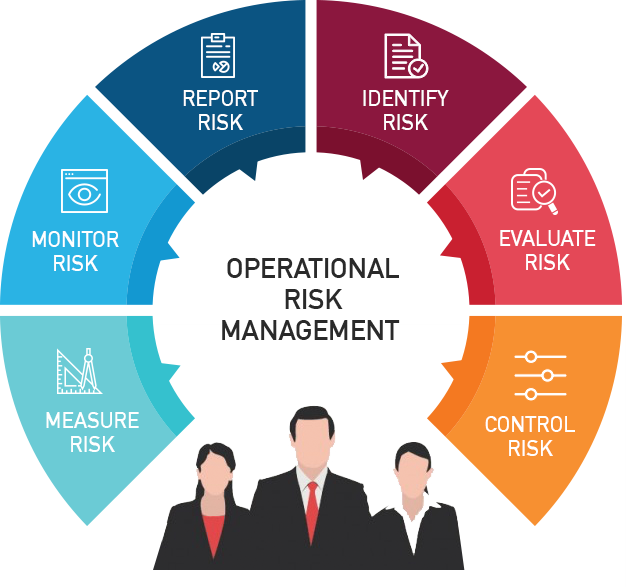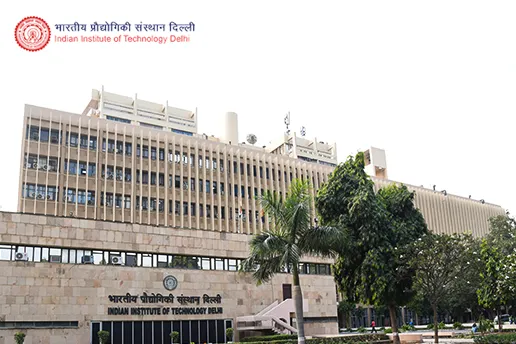
- jaro education
- 10, May 2024
- 10:00 am
Senior Management often approaches risk from one of two angles. The traditional Enterprise Risk Management (ERM) mindset aims to strike the perfect balance between risk and reward. At times, the organization might be willing to take on more risk to accelerate growth, while in other instances, the focus might shift towards controlling risks to ensure steadier progress. On the flip side, the Operational Risk Management (ORM) perspective tends to lean towards risk aversion, prioritizing the organization’s protection.
But what exactly is Operational Risk Management, and how does it work? In this blog, you will get deeper insight into this critical aspect of business strategy. Operational Risk Management (ORM) covers a series of strategies aimed at assessing, decision-making, and implementing risk control measures to mitigate potential threats. From minor hiccups to potentially catastrophic crises, ORM seeks to navigate and minimize the impact of risks on the organization.
Understanding Operational Risk Management
Operational risk management (ORM) focuses on identifying, assessing, prioritizing, and reducing risks that arise from daily operations and business workflows within an organization. The goal is to systematically understand, manage, and monitor these risks to minimize their potential negative impact on organizational objectives and outcomes.
Operational risk refers to the risks associated with executing an organization’s operations, arising from various sources such as human error, third parties, cybersecurity threats (like data breaches or ransomware attacks), external events (political turmoil, natural disasters), and government regulations. Mismanagement of operational risks can lead to financial losses, reputational damage, legal liability, or disruptions to business operations.
Table of Contents
Effective internal controls, especially in compliance and technology areas, are crucial for mitigating operational risks. Internal processes like customer and vendor onboarding or credit risk assessments can expose organizations to significant risks if not properly managed. For instance, inadequate due diligence when engaging with new customers or partners can result in non-payment, contract breaches, or involvement in illicit activities like money laundering. Outsourcing critical functions such as data storage or cybersecurity also exposes organizations to vulnerabilities that require careful risk management.

*npci.org.in
Benefits of Operational Risk Management
Having a robust Operational Risk Management (ORM) system also shows clients that the company is ready for emergencies and setbacks. Companies that can successfully put in place a solid ORM program can enjoy several benefits:
- Increased visibility for C-suite executives.
- Better decision-making regarding business risks.
- Enhanced product quality and increased brand awareness.
- Improved relationships with customers and stakeholders.
- Encreased confidence among investors.
- Enhanced performance reporting.
- More accurate financial predictions for the future.
Examples of Operational Risks
Operational risk is present in all organizations and their internal processes. The main aim of operational risk management is to target the most impactful risks and ensure that employees responsible for managing these risks are held accountable.
Examples of operational risk include
Business Disruption and System Failure:
- Mixing up orders causes delays in fulfilling them.
- Computer systems crash in businesses that heavily rely on automation, like retail or logistics companies.
Clients, Products, and Business Practices:
- Selling defective products, whether knowingly or unknowingly.
- Engaging in unfair business practices, such as fixing prices or making illegal mergers.
Damage to Physical Assets:
- Natural disasters, like tornadoes, destroy warehouses.
- Accidental damage to business facilities is caused by human error, such as damaging computer servers.
Employment Practices and Workplace Safety:
- Violating safety standards in the workplace.
- Illegal outsourcing of jobs that are supposed to be protected.
- Ignoring regulatory requirements.
Execution, Delivery, and Process Management:
- Mistakes in entering data.
- Errors in accounting.
- Difficulty in fulfilling business commitments.
External Fraud:
- Clients are committing fraud against financial services companies.
- Cybersecurity breaches lead to significant losses.
Internal Fraud:
- Employees committing fraud, such as embezzlement.
- Senior management stealing company assets or engaging in insider trading.
Objectives of Operational Risk Management
Operational Risk Management (ORM) focuses solely on operational aspects and does not include other risk areas like strategic and financial risks. Unlike Enterprise Risk Management (ERM), which aims to balance risk-taking with potential rewards, ORM primarily concentrates on implementing controls and minimizing risks. ORM begins by identifying risks and devising strategies to mitigate them.
Additionally, Operational Risk Management (ORM) is focused on safeguarding the organization through proactive actions to reduce or mitigate risks. The scope of ORM’s application differs from one organization to another. Some may encompass managing risks associated with fraud, technology, and everyday operations of financial departments such as accounting and finance. As defined by the Risk Management Association, operational risk involves “the risk of loss stemming from inadequate or failed internal processes, personnel, and systems, or external events.” As a result, ORM extends across domains like cybersecurity, fraud prevention, and virtually all internal control mechanisms.
Establishing a Risk Management framework, whether it’s a formal structure or one developed internally, is crucial for crafting effective internal control processes. To grasp Operational Risk Management (ORM) processes within your organization, it’s beneficial to categorize operational risks into groups such as people risks, technology risks, reputational risks, and regulatory risks. Below you will get to know each objectives of ORM in detail:
People
People in ORM incorporate employees, customers, vendors, contractors, and other stakeholders. Employee risks involve human error and intentional wrongdoing, like fraud. Risks include breaking policies, lack of guidance, poor training, bad decisions, or fraudulent behavior. People can also pose risks externally, especially with the emerging impact of social media on businesses. Risks related to people can be sensitive and tricky since they play a role in every aspect of an organization’s operations. Promoting a healthy risk culture through training and regular communication is crucial for managing this area of risk.
Technology
From an operational standpoint, technology risk includes hardware, software, privacy, and security. Technology risks also affect the “people” category mentioned earlier. Hardware limitations can hamper productivity, especially in remote work setups. Software issues, like outages or lack of training, can also decrease productivity. Moreover, software can impact customers as they interact with your organization. External threats like hackers attempting to steal information or hijack networks can lead to leaked customer data and privacy concerns.
With the increasing prominence of technology in our daily lives, the risks associated with this domain become more pronounced and intricate. Business needs to consider risks related to technology failures and other potential disruptions.
Regulations
The risk of non-compliance with regulations exists in nearly every organization. While some industries face more regulation than others, all regulations come down to implementing internal controls effectively. Over the past decade, the number and complexity of rules have increased, and penalties have become more severe.
Thus, understanding the sources of risk helps determine who manages operational risk. Enterprise Risk Management (ERM) and Operational Risk Management (ORM) both address risks in the same areas but from different perspectives. To consolidate these disciplines, some organizations have implemented Integrated Risk Management (IRM). IRM addresses risk from a cultural standpoint. Depending on the objective of the particular risk practice, the organization can implement technology with different parameters for teams like ERM and ORM.
Moreover, Operational Risk Management is one of the essential parts of management. If you are looking for a career in management, you can start your journey with the Online MBA Degree Programme from Symbiosis School for Online and Digital Learning (SSODL). This program is crafted to boost your strategic thinking and set you up for success in today’s fast-paced business world. If you aspire to excel in operational risk management, this course equips you with the required knowledge to thrive professionally.
Stages of Operational Risk Management
The five stages of the operational risk management (ORM) process play a crucial role in helping organizations prepare effectively for potential risks to their operations. Here are the five stages of operational risk management:
Risk Identification
The initial stage of ORM entails identifying any potential risks associated with current or future operations. These risks may include major losses or accidents, legal liabilities, inadequate insurance protection, or other threats that could adversely affect the business. Early identification of potential risks enables organizations to be better prepared to manage them if they materialize. However, during this stage, the risk culture might not be fully established across all levels of the organization, thus relying heavily on the quality and integrity of employees and shareholders to maintain adequate control of events.
Risk Analysis
After identifying risks, the next step involves analyzing them to assess both their likelihood and potential impact on operations. This analysis helps prioritize the most significant risks, enabling organizations to address them promptly and make informed decisions regarding resource allocation for risk reduction efforts.
Risk Control Measures
Once risks have been identified and prioritized, they must be mitigated through the implementation of effective control measures. These measures may include the development of policies and procedures for employees to follow, along with training and education initiatives to enhance understanding of the importance of these measures. Additionally, technological solutions such as automated processes and systems can significantly reduce operational risk. At this stage, organizations typically establish a specific area dedicated to managing risks, defining policies, responsibilities, and supporting tools.
Managers at this phase have resources available to them, including process mapping to identify risks and formalize controls, structuring a loss history database, and designing efficiency and profitability indicators. These resources aid in the effective management of operational risks and contribute to the overall success of the risk management process.
Risk Oversight
The fourth phase within Operational Risk Management (ORM) entails the continuous monitoring of the efficacy of control measures in mitigating operational risk over time. This involves evaluating their success in preventing losses or incidents within specific operational areas or departments of an organization. Regular assessments are imperative to confirm the adequacy of implemented control measures against identified risks, with adjustments made as necessary.
To facilitate this monitoring process, organizations establish both qualitative and quantitative risk indicators alongside predetermined goals or thresholds. These indicators serve as benchmarks for monitoring risk exposure. A balanced scorecard is often utilized to consolidate risk exposure measures and gauge business performance relative to risks. This phase emphasizes the decentralization of management across all organizational domains and the reinforcement of a risk-aware culture. Moreover, monitoring activities shift away from solely relying on the compliance function, with leaders being tasked to oversee and analyze processes and activities.
Documentation & Evaluation
The final stage of ORM involves comprehensive documentation of all pertinent information pertaining to each phase—from initial risk identification to control implementation—in a systematic manner. This documentation allows stakeholders to periodically review the process for accuracy and completeness, facilitating informed decision-making regarding potential changes or updates. Organizations can make well-informed decisions concerning their future investments by ensuring stakeholders possess a thorough understanding of the actions undertaken throughout each phase.
Challenges in Operational risk management
Operational risk management is crucial for many organizations, but it often faces hurdles that make it tough to meet customer and stakeholder expectations. Despite being a part of enterprise risk management (ERM), operational risk management encounters similar problems, like having too many priorities and not being seen as valuable enough. Here are some common challenges:
- Resources such as Risk assessment, Risk identification, Monitoring and reporting should be allocated for operational risk management or ERM in organizations.
- People need to communicate or educate more about why operational risk management matters and how it affects a company’s finances when things go wrong.
- Board members and top executives sometimes need to realize how important operational risk management is.
- There are no standard ways to measure and evaluate risks, making it hard to know exactly how risky an organization is.
- Associations and organizations need to agree on the same words when talking about risk so that we can do better Risk and Control Self-Assessments (RCSAs) in the future.
- Processes get more complicated because of new technology.
- Operational risk management gets mixed up with other things like compliance and IT, so it needs to get more attention.
- Operational risk management programs can be messy, complicated, and made in a hurry to follow rules and regulations.
Conclusion
Operational risk lurks in the shadows of every business, ready to strike from the most unexpected corners. The threat of loss stems from the everyday hustle of operations – from flawed processes and inexperienced staff to outdated systems and unforeseen external factors. You can not avoid operational risk, as it’s ingrained in the fabric of daily business life.
Yet, while operational risk may be an unavoidable companion on the entrepreneurship journey, it’s not entirely beyond our control. Companies wield the power to confront, tame, and even embrace operational risk through strategic measures. There are ways to navigate the treacherous waters of operational risk, whether it’s tightening processes, investing in employee training, fortifying systems, or bracing for external turbulence. So, while it may be an ever-present challenge, it’s also an opportunity for businesses to showcase resilience and adaptability in the face of adversity.








